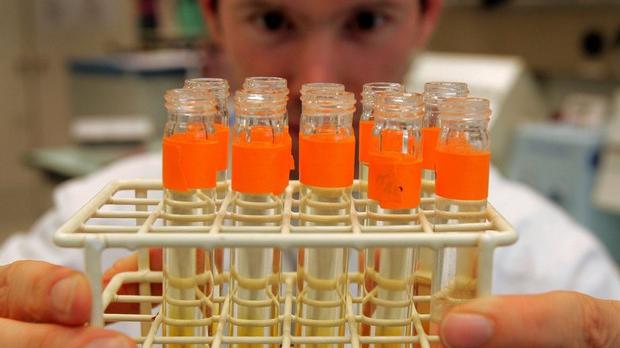Despite studies and advances in science, bipolar disorder still represents a serious mental health problem today. Due to the disease, which occurs in the form of episodes of depression or mania alternating with asymptomatic periods, affected people – around 45 million worldwide, according to estimates by the World Health Organization – have difficulty managing work. economic resources, study (the peak of onset occurs between the ages of 15 and 19), relationships and sexuality; as if that weren’t enough, the risk of suicide can increase by up to 20%.
Adequately treating the disease in the maintenance phase, once the episodes have been overcome, is essential to prevent disastrous relapses and guarantee the patient a normal life. Currently, the gold standard of therapy for stabilizing mood is lithium; how it works is not yet fully understood, but some tests on nerve cells suggest that it may relieve the inflammation responsible for the breakdown of tryptophan (a protein constituent) into quinolinic acid and its precursors, potentially involved in the development and worsening of symptoms.
Although lithium is effective in both treating and preventing episodes, the data show that only 30% of patients respond perfectly to therapy; in all other cases, we try to improve the results with pharmacological cocktails (the association between lithium and valproate is very common).
Research
Assuming that in bipolar patients the degradation of tryptophan is increased and that lithium reduces it due to its anti-inflammatory effects, Dr. Frederike T. Fellendorf and Dr. Mirko Manchia – together with other colleagues from the University’s Department of Medical Sciences and Public Health of Cagliari – compared the levels of tryptophan metabolites in the plasma of bipolar patients with those of healthy subjects, to identify possible differences; They then assessed whether there was a relationship between the patients’ response to lithium and the levels of the aforementioned substances.
The study – recently published in the Journal of clinical medicine – took part 48 healthy subjects and 48 bipolar patients in the euthymic state (i.e., with mood within normal limits) being treated at the Psychiatry Unit of the AOU Cagliari .
The results
Plasma analyzes showed that bipolar patients had lower tryptophan levels than healthy subjects, while those of kynurenine (a precursor of quinolinic acid) and the kynurenine / tryptophan ratio were higher, indicating higher tryptophan degradation. than normal; but the levels of quinolinic acid – contrary to expectations – were even lower than those measured in healthy people (according to the authors, thanks to the long-term effects of stabilizing therapy).
Furthermore, in the subgroup of patients treated with lithium, the authors observed that quinolinic acid and precursor levels were higher in patients who did not respond to the drug, supporting what was hypothesized about its mechanism of action.
The researchers also extended the analyzes to valproate and lamotrigine (antiepileptic drugs with stabilizing actions) but did not find any relationship between the clinical response and plasma levels of metabolites.
Conclusions
Despite all its limitations, including the small number of participants, the study lays the foundations for more in-depth evaluations regarding the clinical potential of these new markers; if they are confirmed, personalized therapeutic strategies can be planned, which allow optimal management of the disorder for the benefit of patients.
Jessica Zanza
***
Europe, obesity warning
There is a silent epidemic affecting people in Europe: it is overweight and obesity, which are estimated to play a role in more than 1.2 million deaths each year, accounting for more than 13% of total mortality in the old. continent.
The alarm was raised by the European office of the World Health Organization (WHO), which presented a new report a few days ago in which it is highlighted that none of the Member States of the European Union is currently on track to stop the weight gain among the population.
Currently in Europe 59% of adults and almost 1 in 3 children are overweight or obese. The phenomenon does not spare even the smallest children, so much so that it is estimated that 7.9% in the age group under 5 suffer from excess weight. Prevalence increases in the 5-9 year age group, with one in eight children obese (11.6%) and nearly one in three overweight (29.5%).
During adolescence there is a decrease in prevalence (7.1% in the 10-19 age group are obese and 24.9% are overweight). The rates of overweight and obesity, however, start to rise again in adulthood, where there is an obesity rate of 23%.
WHO recalls how obesity and overweight are associated with a high number of diseases: for example, they are involved in the onset of 200,000 new cases of cancer per year and it is estimated that they cause 7% of the total years lived with disabilities in Europe. Figures set to rise in the coming decades, considering that, according to the WHO, for some countries in the region, obesity will overtake smoking as the main risk factor for preventable cancer.
To counter the “epidemic of overweight and obesity”, WHO urges Member States to take effective measures (such as taxing sugary drinks or facilitating access to services dedicated to food health) and policies capable of improving eating habits and to increase physical activity throughout life, starting from an early age.
Red. Ins.
© All rights reserved
